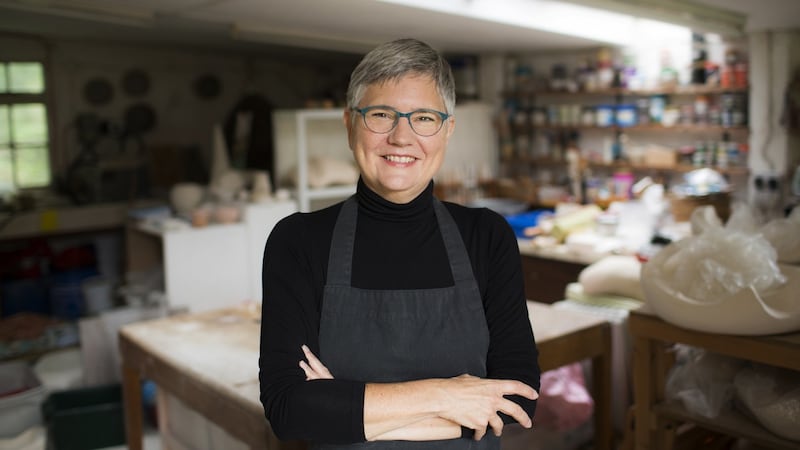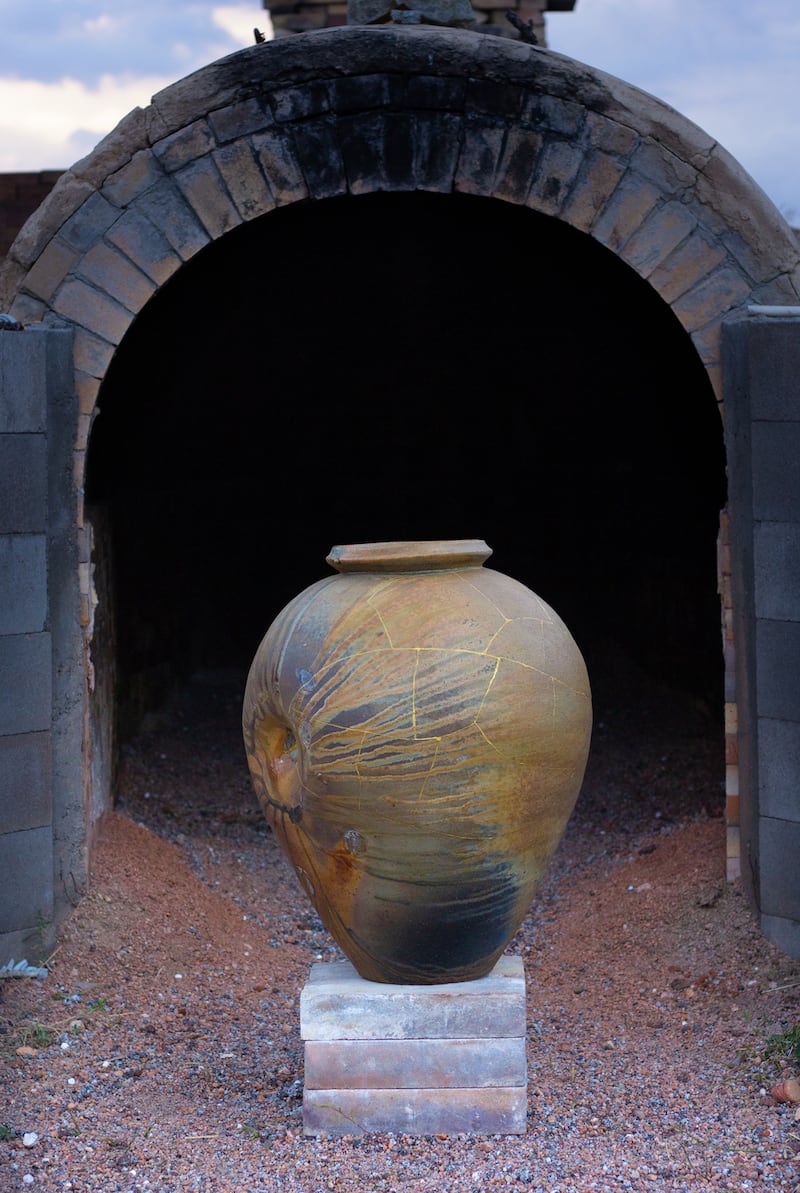Imagine a beloved object: a cup, a plate or a bowl. Perhaps your favourite auntie owned it, or was it found in another country and shipped safely home? Now it is broken, fallen into a small handful of large shards. Did you break it? Or is it worse if it was your partner who you try not to berate for their occasional clumsiness?
Now imagine a centuries-old tradition of mending that adds beauty to the joins. Not quite a celebration of scars, but an affirmation that things can be rescued, and that perfection is only ever temporary – if it exists at all. Welcome to the world of Kintsugi.
Before I discovered the Japanese art of mending with resin and gold, I used to put dabs of nail polish on ceramics that had got chipped at the rim. To begin with I tried to match the colour to the glaze, but after a while I found it was more satisfying to highlight them with a different colour. Making it shine in red, silver or gold created a feeling of happiness, a sense of satisfaction at a rescue, and a reminder that this particular piece was loved enough to be rescued at all.
Some years ago I interviewed the artist Cléa van der Grijn. She had a vase, carefully packaged and sent home from a trip to Mexico. It had arrived, if not in the cliched thousand pieces, then pretty close to it. When she showed it to me, proudly displayed on a shelf, fused together with veins of gold, I thought it was one of the most beautiful things I had seen.
In her book Kintsugi: The Poetic Mend, Bonnie Kemske explores this extraordinary craft, touching on history, stories, political activism and more. Through its pages, we are brought to consider cracks in the landscape, our own personal, physical and emotional scars, and explore Japanese traditions of making and mending in contrast with western ones more familiar here.

Kemske originally trained as a dancer before turning to ceramics. Her “cast hugs” are sculptural pieces, created to be held to the body – so it’s no surprise when she says that “objects have lives. We project emotions into them.”
Her own house is comfortably full of objects, and she describes Kintsugi as “a link to the generations behind you, and on to future generations”.
Online kits
Kemske is keen to dissociate her research and thinking from books such as Tomás Navarro’s Kintsugi: Embrace Your Imperfections and Find Happiness – The Japanese Way, a book that promises to help you achieve joy against the odds. Published in 2018, it was described in one review as “the latest lifestyle trend promising to transform our lives ... ” No wonder Kemske, who cares deeply about the traps of cultural appropriation, prefers to keep her distance.
Nevertheless, you can see how the philosophy behind the art might lend itself to the glib promises of self-help. In her own introduction, Kemske asks us to imagine a broken dish, handed down by a grandmother.
“She had little to leave, but she knew this dish would always remind you of her. And now it is broken.” Maybe you could find a professional restorer, she muses. “But even with the finest restoration, even if it looks as good as new, you will always know that it has been broken ... it will never be the same again.”

The point – or one of the points – of Kintsugi is that nothing is ever the same again. Stretch the thought, and every time you use a beloved object, you change it as it now carries the memories of each moment of use. Kemske agrees.
“An object is never finished,” she says simply. Kintsugi marks that change, beautifully.
Before I met Kemske (via Zoom), I had bought a Kintsugi kit online. The pretty white box costing €27 from humade.nl contained one of those double tubes of glue – the ones that start setting as soon as you mix them. There were some wooden mixing sticks, rubber gloves and a little pot of gold. I was very excited, and not very good at it. My Kintsugi was blobby, and looked nothing like the pictures in the accompanying Kintsugi-is-easy manual.
But experimenting perfected my technique, and despite the fact that trial and error also caused the discovery that my fixes weren't dishwasher-proof, I had (mostly) happily resurrected a cracked vase, chipped bowl and broken plate. Another kit, this one €17.95 from sandyleaffarm.com, includes two bowls to practice on, which makes me smile at the thought of anyone not already having plenty of banjaxed ceramics to hand.
Urushi lacquer
Kemske is tactfully polite about my efforts, which are more glue make-and-do than genuine Kintsugi, and recommends the kits starting at £73 (€84.50) at kintsugioxford.com, where you will also find tips and how-to sessions. Genuine Kintsugi calls for urushi, a material that comes from the Japanese lacquer tree and is collected by scoring the bark and catching the drips. Treat it cautiously – it is toxic to most people and requires gloves and careful handling.
The surfaces of your broken object are painted with urushi, then dabbed with a thicker mix of urushi, with added flour and/or starch glue. Then make filler, which also includes fine sawdust. Clay dust gets involved, and you’re still not ready to gently sprinkle the joins with gold.

“It is a fine craft,” writes Kemske. “It requires years to gain both the explicit and tacit knowledge needed to become a master.”
This is true, and yet I feel there is also a role for the fascinated amateur. It is true that the more thinking time you put into a craft, the more you tend to get out of the results – emotionally as well as practically. But you might also just want to bring a broken bowl back to life, and that’s fine too.
Pieced back together
Kemske draws my attention to Claudia Clare's Remembering Atefeh, a ceramic and performance work from 2011-2013 in which the artist created, smashed and reassembled a vase-shaped vessel in defiant memory of Atefeh Rajabi Sahaaleh, who was executed in Iran in 2004 for the crime of having been raped. "Why would anyone want to use clay pots to tell stories about surviving sexual violence?" asked Clare. "It's the 'surviving' bit that's important. Clay pots are long lasting ... They can be shattered and pieced back together." Or then there's Dutch artist Bouke de Vries, whose Kintsugi works create, as he puts it, "ghosts" of themselves.
Kemske is an engaging writer and expert researcher with a brilliant range of references, and her journey takes her from her home in Cambridge to Japan, via the songs of Leonard Cohen, the words of Ernest Hemingway and the Star Wars movies.
“Ceramics are strong – they are what survives on archaeological digs – and yet they’re fragile,” she says. “There’s this wonderful conflicting viewpoint, encompassed in the same thing.”
Kintsugi: The Poetic Mend by Bonnie Kemske is published by Bloomsbury, £30












